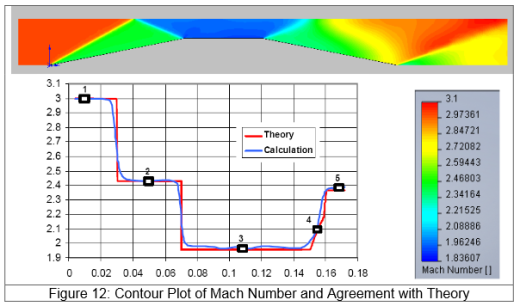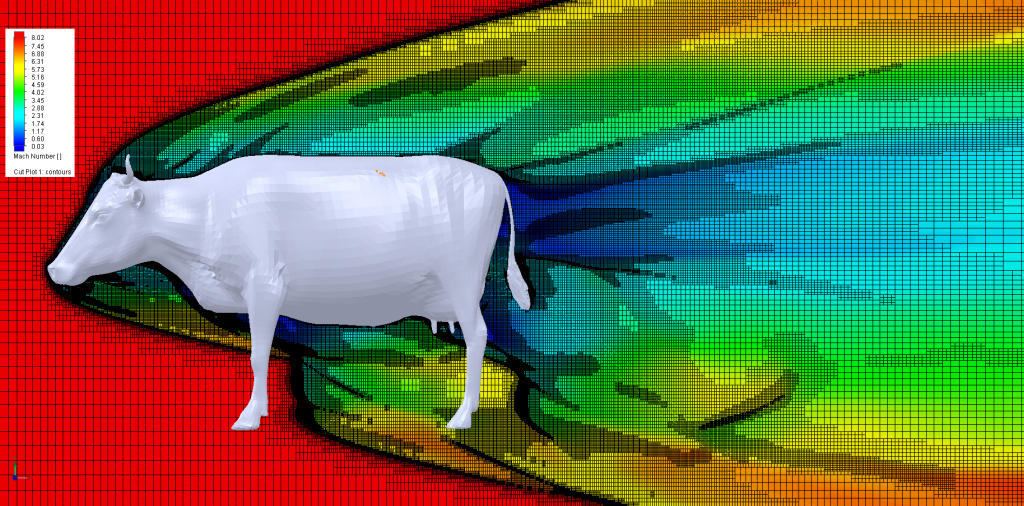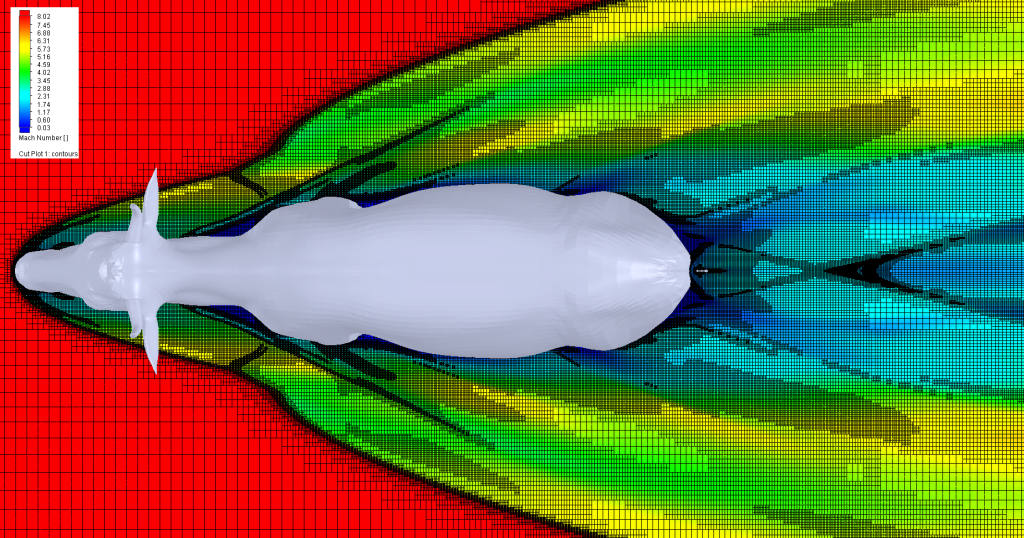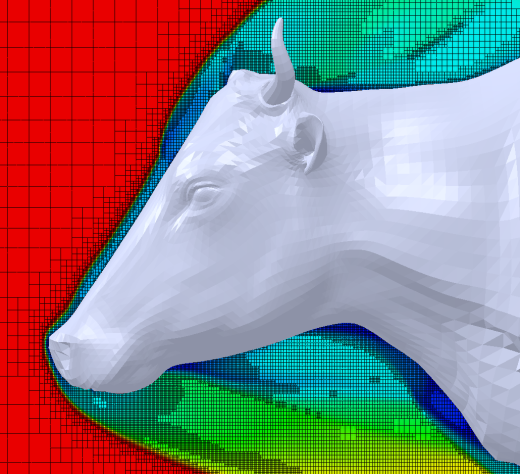Can Cows Fly? FloEFD Investigates. Part 3 – Superbly Sonic
If air flows fast enough over something it can tend to lift itself up. Ask any child running with a kite, trying to get it airborne. If air flows fast over something it can tend to squash it downwards. Ask any F1 racing driver powering around a corner at 120 mph. Our cow has a +ve lift coefficient and at ~1000 mph will lift off. Although there is some supersonic shock formation at such speeds, the hypersonic shock patterns at higher speeds are too beautiful to ignore. So, taking this blog from the sublime to the ridicowlous, let’s study a Mach 8 cow.
 FloEFD’s aerospace pedigree is always evident than when it comes to super- and hypersonic external aero CFD prediction. The Octree mesh topology lends itself well to the concept of refinement, adding smaller cells to better resolve gradients or solid/fluid interfaces. The initial mesh refines to what it knows, i.e. geometry interfaces. During the solution there is the option to have the mesh further refined based on the actual results, rather gradients in the predicted flow field. The image on the left is taken from Section 3.2 of the white paper ‘How to Choose an Effective Grid System for CFD Meshing‘ and highlights very well the role of solution adaptive mesh refinement. Small cells where you need them, bigger cells where you don’t, achieving an efficient balance between time to results and accuracy of results.
FloEFD’s aerospace pedigree is always evident than when it comes to super- and hypersonic external aero CFD prediction. The Octree mesh topology lends itself well to the concept of refinement, adding smaller cells to better resolve gradients or solid/fluid interfaces. The initial mesh refines to what it knows, i.e. geometry interfaces. During the solution there is the option to have the mesh further refined based on the actual results, rather gradients in the predicted flow field. The image on the left is taken from Section 3.2 of the white paper ‘How to Choose an Effective Grid System for CFD Meshing‘ and highlights very well the role of solution adaptive mesh refinement. Small cells where you need them, bigger cells where you don’t, achieving an efficient balance between time to results and accuracy of results.
When applied to our cow, the shock fronts are evident both in plots of Mach number and also in the mesh that has been automatically refined to resolve those Mach number gradients. [Click on an image to open a higher resolution version]
Those versed in the arts of supersonic flow will be familiar with a ‘bow shock’, but I’ve bet you’ve never seen a ‘cow shock’. Udderly fascinating 🙂
 There are numerous reasons why you wouldn’t see such a flow field in ‘reality’, not unless you happened to witness a reinforced concrete cow propelled at Mach 8. The FloEFD technology presented though is applicable to any type of bluff body, from laminar through to hypersonic environments. The real value is not in the accuracy of the predicted lift and drag coefficients, you’d expect such accuracy from any commercially available CFD tool, but in the ease by which the predictions are made. No CAD import/prepare, just load. No spending days tweaking the mesh to achieve the quality that your CFD solver demands, just mesh + solve. Bold claims indeed and, if you want to proof them, try out FloEFD on the cloud right now.
There are numerous reasons why you wouldn’t see such a flow field in ‘reality’, not unless you happened to witness a reinforced concrete cow propelled at Mach 8. The FloEFD technology presented though is applicable to any type of bluff body, from laminar through to hypersonic environments. The real value is not in the accuracy of the predicted lift and drag coefficients, you’d expect such accuracy from any commercially available CFD tool, but in the ease by which the predictions are made. No CAD import/prepare, just load. No spending days tweaking the mesh to achieve the quality that your CFD solver demands, just mesh + solve. Bold claims indeed and, if you want to proof them, try out FloEFD on the cloud right now.
Or, if you fancy some useless fun on one of the web’s oldest original funny pages, go tip a cow.
12th October 2015, Hampton Court (Sergio), Ross-on-Wye (Robin).







